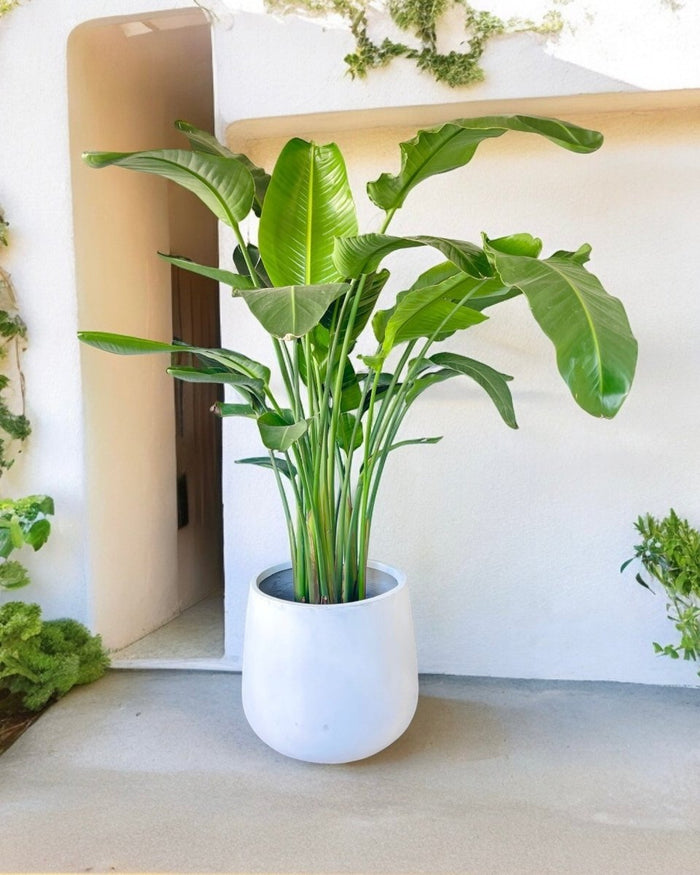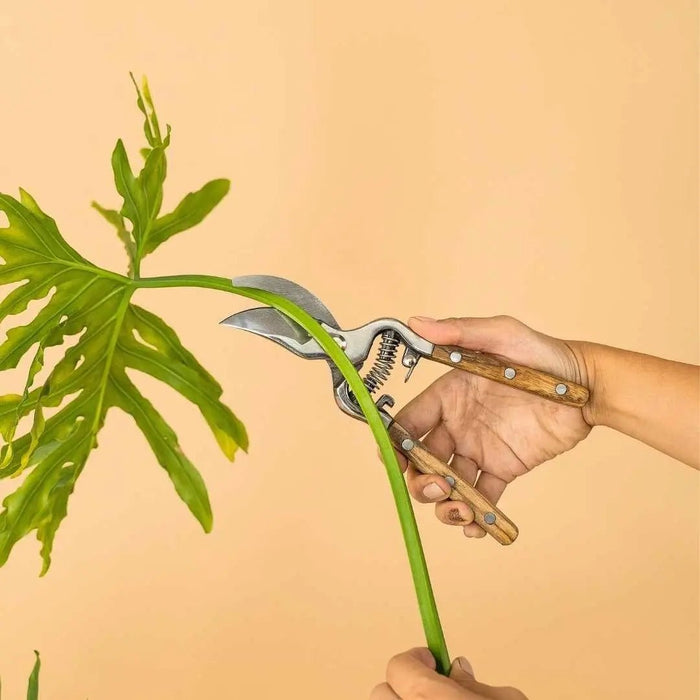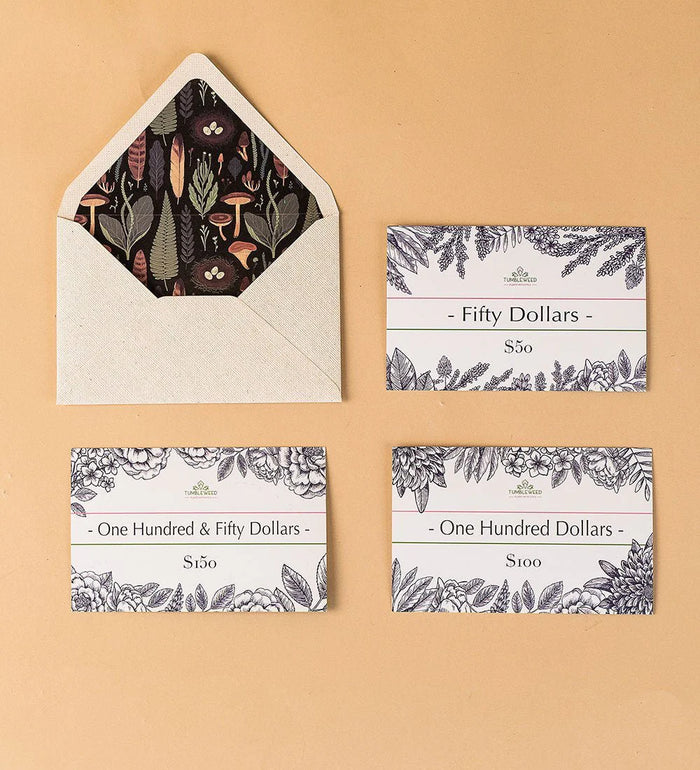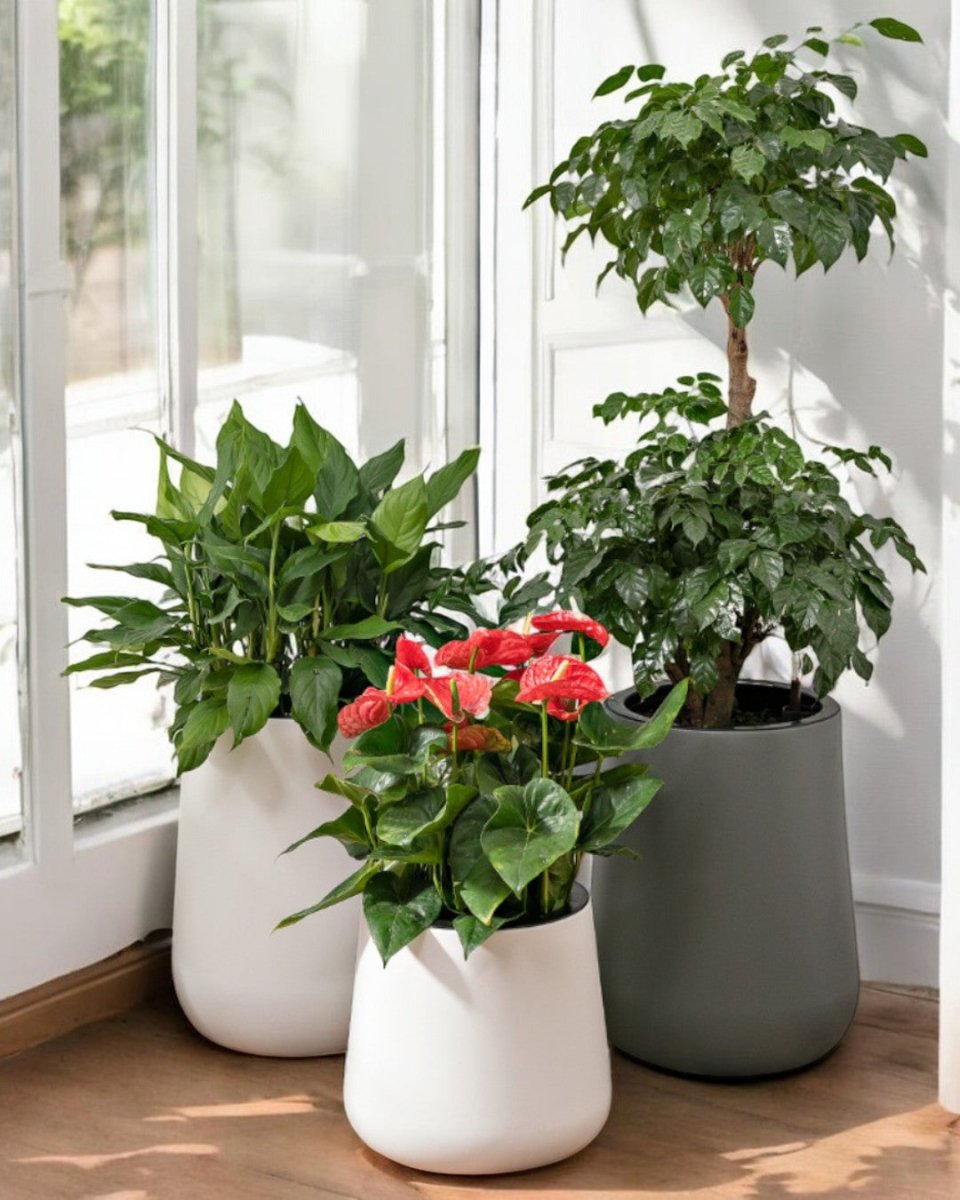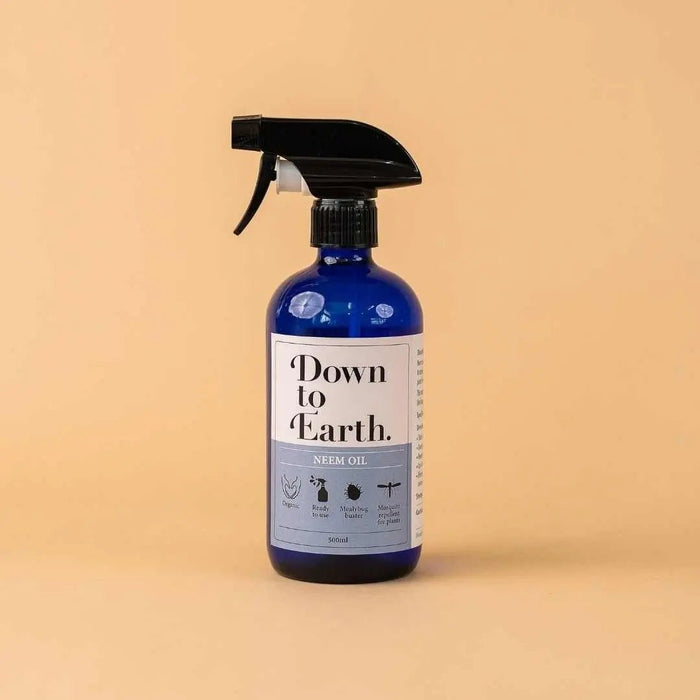How to water your indoor houseplants the right way - Part 1
Posted on April 26 2021
This is the first of a 3 part series on watering. Stay tuned the next two weeks for parts 2 and 3!
Water is incredibly important to plants as we all know, but the tricky part is knowing when and how much to water each plant. It may not be obvious and may take some experience before we learn (and the sacrificing of some plants) but there is a technique to watering your houseplants to keep them growing happy and healthily.
The most common reason why houseplants die is due to improper watering, whether that is over or under watering. If only our plants could tell us just what they need, right? To be fair, there are many signs and symptoms that our plants show before crossing the ‘line of no return’, we just need to be quick to catch them.
Through this 3-part blog series on watering 101, we will give some tips and tricks on watering and talk about some of the common problems related to watering and how to solve them.
Basic Rules of Watering
First things first, there are 5 basic rules of watering that we have to always keep in mind when watering our plants. This will allow us to make a judgement about whether we should water our plants or just leave them alone for a few more days.
1. The more light your plant is exposed to, the more water it needs.
Of course, actual light exposure is in proportion to the amount of light the plant should be in. This is to say that if you put a plant that requires medium indirect light in a place that is exposed to the bright indirect light, the plant will need more water than it usually does.
2. Plants that require more light and are placed in brighter light conditions tend to dry out quicker
than those that do not need as much light and are placed in low light conditions. Generally low light tolerant plants can store water really well and hence use less water from the surrounding soil, so the soil takes a longer time to dry out.
3. Always water thoroughly after repotting.
This is a very important rule to aid your plant in recovering from transplant shock. Moist soil provides the best environment for your plant’s roots to heal and take up nutrients your plant needs to recover.
4. Plants in bigger pots tend to dry out slower than those in smaller pots.
Bigger pots carry more soil which in turn is able to retain more water. This rule is especially applicable to plants that were just repotted into bigger pots. Until the plant starts to grow more shoots/leaves, be careful not to overwater them.
5. Give your plant some time. As with all living things, plants need time to get used to changes in their environment. Whether it is repotting or changing the position of your plant, it may react to this change and look sad for a few days. It is normal, just keep an eye out for it and make sure it doesn’t do anything silly. Plants are really like kids, aren’t they?

Time of Day and Type of Water
With the basic rules covered, here are some tips about what kind of water to use and the time of the day to water your plants. Sometimes just adjusting these 2 factors can make a big difference to the health of your plant.
Best kind of water to use: Overnighted, room temperature water would be the best choice. Leaving your water out overnight gives enough time for the excess salts in tap water to oxidize and allow the temperature of the water to level out.
Best time to water plants: Mornings and evenings are both good times to water your plants. However, watering in the mornings is the most ideal as it gives more time throughout the day for any splashes on leaves or stems to dry out.

Steps To Watering The Right Way
Keeping the 5 basic rules of watering in mind, we can talk about the steps to take when watering your indoor houseplants. Indoor houseplants can be tricky to water without making a mess in your space - whether it is your home or office, both are places we do not like wet messes. Often we might dribble a bit of water on the surface of the soil to prevent (1) overwatering, and (2) making a mess by causing water to drain from the bottom. This in turn may cause underwatering. The steps listed below will definitely help and will even save you some time.
Set a watering schedule. Most plants prefer to be watered regularly, so setting a watering schedule for your plant can be a good way to achieve that while making it easy to remember as well. When making a watering schedule, always try to mimic your plant’s natural native environment; tropical rainforest plants would definitely need more frequent watering & higher humidity than dessert-dwelling plants.
Always check soil condition before watering. Even with a watering schedule, it can be difficult to tell if your plant actually needs to be watered. Checking how damp/dry the soil is before watering can be very helpful in knowing whether it is time. A good way to do so is by sticking your finger into the soil 1 inch deep. Sometimes the soil may look dry at the surface but is actually still damp within. Another way to gauge whether it is time for watering is simply by lifting the pot and weighing the plant. If the plant is very light, it means the soil is dry. It is a good idea to also lift the plant after watering it thoroughly so you know how heavy the plant should be post-watering.

Always water thoroughly. This is the most important step. When watering, always make sure that the plant is watered thoroughly. The soil should be wetted all the way through. This is because the roots are closer to the bottom of the pot than to the top. Imagine a cross-section of the plant in the pot, if the plant is not given sufficient water, the water would only be retained at the top while the most important part of the plant, the roots, are still dry. A good rule of thumb is: for pots with a drainage hole, water till the water drips out from the bottom, while for pots with no drainage hole, make sure the soil is damp but not soggy. Re-emphasizing point 2, make sure the plant has a good weight after watering and not all of the water has drained out.
Give your plants a good soak. If all of the water that was poured into the pot has drained out, it can be a sign of too well-draining soil or soil that hasn’t been watered for so long that it is now bone dry. In such cases, (other than repotting your plant in fresh soil) the only way to water your plant would be to soak it in a tray with water. This is also a good way to water all your plants, especially smaller plants which have less soil to retain water, as the water would be absorbed from the bottom nearer to the roots. It also prevents nutrients from getting flushed out. Simply fill the tray with 2-3cm of water, or until the drainage holes on the pot are covered, and leave your plant to soak for 10 minutes. Sometimes you can literally see your plants drink up the water. Keep refilling the water until you plant doesn’t take up anymore. Remember to drain the excess water after 10 minutes to prevent root rot!
Keep an eye on your plants. Always monitor how your plant behaves and adjust your watering frequency accordingly! Even though each species require the same general care conditions, each individual plant may differ slightly due to various environmental factors. The key to saving your plants in many problematic situations (whether it is watering, bug infestation etc) is always to catch it quickly and rectify the situation, so being attentive is also on the list.
Watering your indoor houseplants may seem like a tough skill to pick up all at once, but it is definitely something that comes with experience. The more you do it, the better you will get at understanding what your plant needs. If you are just starting out, consider choosing plants that are tough to kill.
Once you have gained some knowledge and experience, and have mastered watering those, you can get some higher maintenance ones, which will probably stress you out but should definitely be worth the effort!








